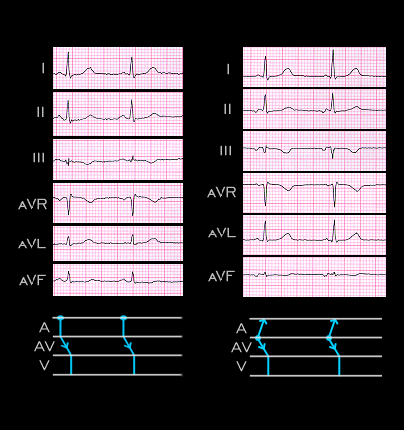
The sinus P wave from page 7.2.2 is shown on the left. Its frontal plane vector is directed to the left and inferiorly with an axis of +60 degrees. The abnormal P wave from the previous page is shown on the right.
Its frontal plane axis is still ponted to the left but it is now directed superiorly reflecting the superiorly directed activation of the atria. Its axis is -70 degrees. The PR interval of the sinus P wave is 0.16 seconds while that associated with the ectopic P wave is 0.10 seconds. This suggests that the ectopic focus is located within, or very close to the AV node, above the region of the AV nodal delay, and that it activates the atria in a retrograde direction before traveling through the rest of the AV node and His-Purkinje system to activate the ventricles. The ladder diagrams shown below the ECGs are a graphic way to illustrate these relationships.
